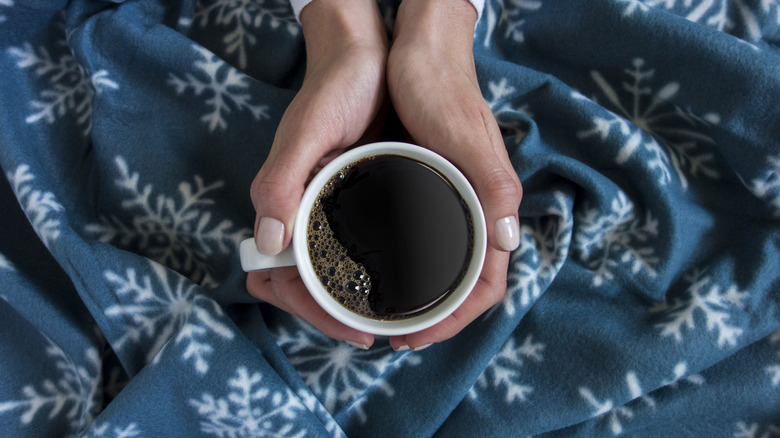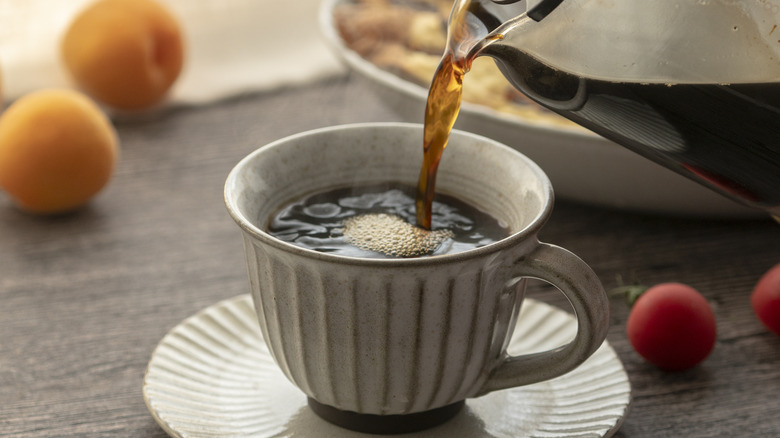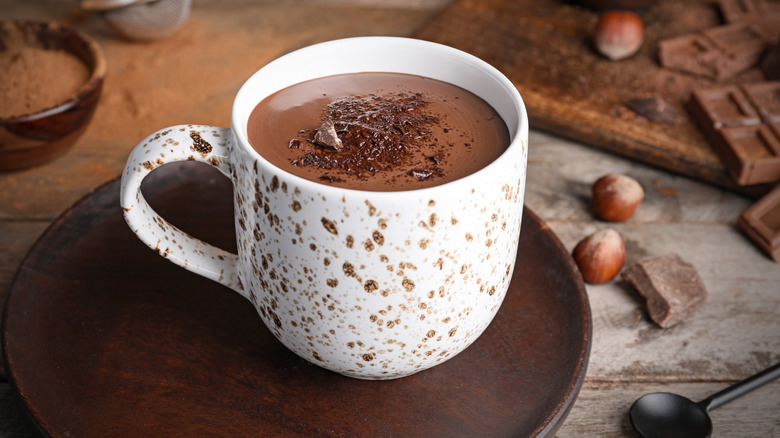Karsk Is The Norwegian Cocktail That Combines Coffee And Liquor
In the heart of the Norwegian winter, amidst the snow-covered landscapes and the air's crisp chill, a boozy, caffeinated beverage warms the bodies and souls of natives and tourists alike. Karsk is a simple yet potent concoction that has been a staple of the Nordic nation's heritage for generations. The primary recipe for karsk calls for just a couple of ingredients: moonshine — called "akevitt" or "hjemmebrent" — and black coffee.
The term karsk originates from the Old Norse word "karskr," which loosely translates to "hearty" — the perfect adjective to describe this enlivening, hard potation. Though seemingly straightforward, preparing karsk is an art in and of itself. First, a sturdy mug or a small metal cup is filled with a generous amount of akevitt, which is then topped off with freshly brewed coffee. The alcohol-to-coffee ratio is a matter of personal taste; some luxuriate in an extra-strong kick, while others opt for a milder, less overpowering blend. Sugar is occasionally added to sweeten the mix, but purists appreciate the contrasting bitterness of the coffee against the robustness of the virtually flavorless, relatively high-proof akevitt.
Karsk has a delicious history
Delving into the history of karsk reveals its roots in the longstanding tradition of crafting spirits. While its birthplace remains a mystery, Sweden's Bohuslän district likely kickstarted the trend in the 1800s. Meanwhile, the production of moonshine, known as "hjemmebrenning" (or "home burning"), was common in rural Norway, partially driven by the high taxes on alcohol during the 19th century (via Big Norwegian Encyclopedia). As a result, families would illegally distill their own spirits to save money, often using methods that were passed down from generation to generation. Karsk emerged as a way to enjoy these homemade spirits, offsetting them with the heat of the mellower coffee to create a drink that could help people combat the harsh atmosphere.
Despite its humble origins, Karsk has found its place in contemporary Scandinavian society, becoming a symbol of conviviality and hygge. Karsk is often shared at social gatherings, especially during the colder months, when it serves as a liquid embodiment of the nation's appreciation of togetherness and its collective resilience against the elements.
Tasty karsk alternatives
If you're seeking alternatives to karsk, you might try exploring various hot cocktails that provide a comforting experience. One option is the classic Irish coffee, a sophisticated yet approachable blend of rich coffee and honeyed, aged whiskey garnished with a layer of cream. For a sweeter twist, make your hot chocolate boozy with your favorite festive spirit, such as peppermint schnapps, bourbon, or flavored liqueurs. The fusion of smooth chocolate and a touch of your preferred intoxicant creates a cozy treat that's perfect for frosty evenings spent hunkered down indoors.
As for where you can sip on a lovely cup of karsk, the answer most likely lies in embracing the Norwegian spirit of camaraderie and hospitality. While you might stumble upon it in some urban bars, the true essence of karsk is experienced in more intimate settings — a cabin retreat, a family function, or a friendly get-together. The remote, snowy terrains of Norway, for example, provide the perfect backdrop for enjoying this iconic libation.


